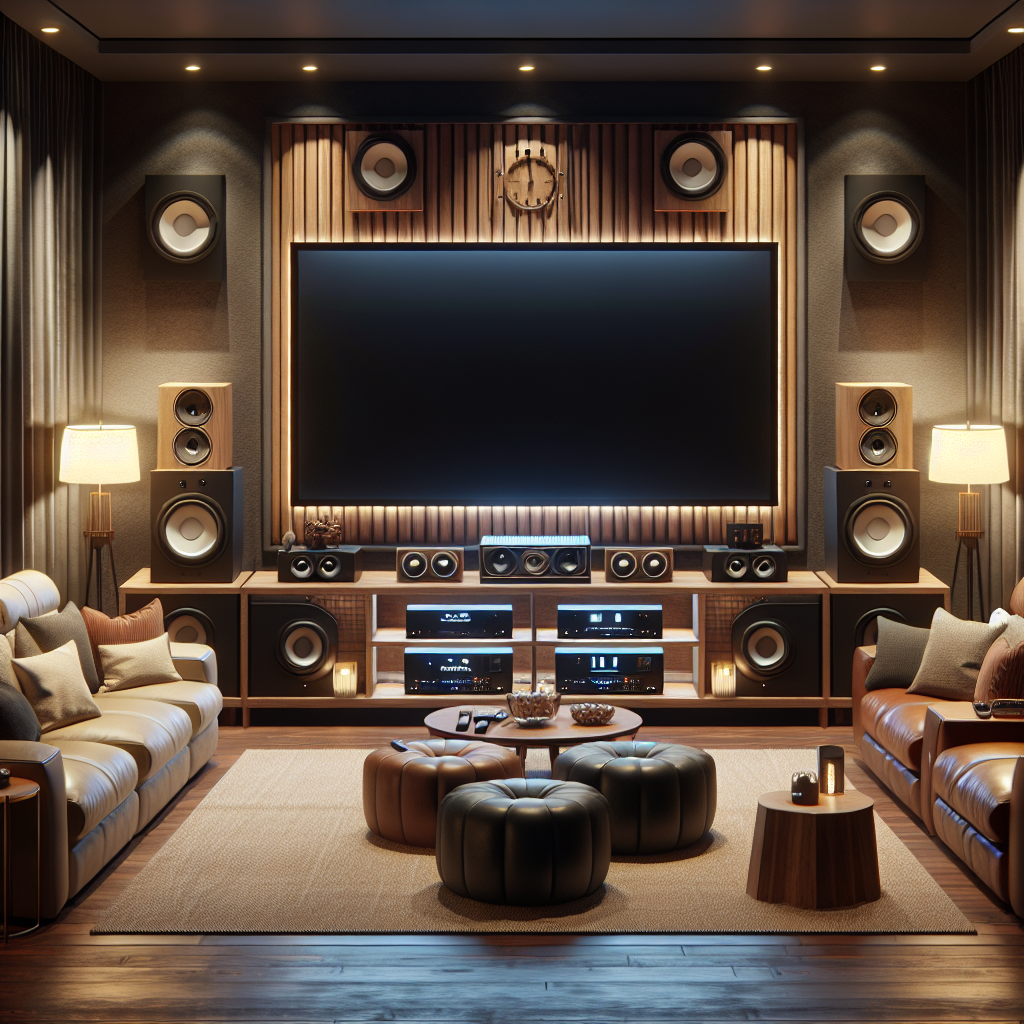Creating a home theater audio setup can transform your movie-watching experience into an immersive journey filled with rich sounds and realistic audio effects. Whether you’re a cinephile or just looking to enhance your entertainment setup, following proper guidelines and tips will help you achieve the best results. This article provides a comprehensive look at how to set up a home theater audio system.
Selecting the Right Equipment
Your choice of equipment can greatly impact the quality of your home theater audio setup. Here are some essential components to consider:
- AV Receiver: Acts as the hub of your home theater system, processing audio and video signals.
- Speakers: Include front, center, surround, and subwoofer for a complete audio experience.
- Subwoofer: Handles low-frequency sounds and adds depth to the audio.
- Cables and Wires: Ensures proper connectivity between different components.
Choosing an AV Receiver
The AV receiver is the centerpiece of any home theater audio setup. It receives and amplifies audio signals, directing them to the appropriate speakers. When choosing an AV receiver, consider the following:
- Channels: Go for at least a 5.1 channel receiver for basic setups; more advanced setups may require 7.1 or 9.1 channels.
- Wattage: Ensure it provides sufficient power for your speakers.
- Connectivity: Check for HDMI, Bluetooth, and Wi-Fi capabilities.
Types of Speakers
Understanding the different types of speakers and their functions is crucial for a well-rounded audio setup. The primary types include:
Front Speakers
Placed to the left and right of your screen, these speakers handle the majority of the audio.
Center Speaker
Placed directly above or below the screen, it handles dialogue and ensures voices are clear and focused.
Surround Speakers
Placed to the sides or behind the seating area, these speakers create an immersive environment by handling ambient sounds and effects.
Subwoofer
Placed anywhere in the room, the subwoofer handles low-frequency sounds like bass and rumble.
Recommended Speaker Placement
Proper speaker placement is essential for optimal sound quality. Follow these guidelines:
| Speaker Type | Placement |
|---|---|
| Front Speakers | Equidistant from the screen at ear level |
| Center Speaker | Directly above or below the screen |
| Surround Speakers | To the sides or behind the seating area |
| Subwoofer | Any corner or along the front wall |
Setting Up the System
Once you have all your components, follow these steps to set up your home theater audio system:
- Position your speakers according to the recommended placements.
- Run the speaker wires from each speaker to the AV receiver.
- Connect your AV receiver to your television using an HDMI cable.
- Plug in and power on all components.
Calibrating Your Audio
Calibrating your audio ensures that all speakers are balanced and delivering optimal sound. Most modern AV receivers come with built-in calibration tools, such as Audyssey or YPAO, to assist in this process. Here’s how to use them:
- Place the calibration microphone at your primary listening position.
- Follow the on-screen prompts to begin the calibration process.
- The system will produce test tones to measure the distance and sound levels of each speaker.
- Adjust settings as necessary to achieve balanced audio.
Advanced Tips for Optimal Audio
- Acoustic Treatments: Use wall panels, bass traps, and diffusers to manage sound reflections and improve audio quality.
- Speaker Stands: Elevate your speakers to ear level for better sound projection.
- Wireless Speakers: Consider wireless surround speakers for a cleaner setup and easier placement.
Maintenance and Upgrades
Regular maintenance and timely upgrades can keep your home theater audio setup in peak condition. Here are some tips:
- Dust and Clean: Regularly dust and clean your speakers and AV receiver to prevent performance issues.
- Firmware Updates: Check for and install firmware updates to your AV receiver for improved functionality and new features.
- Component Upgrades: Upgrade individual components, such as replacing old speakers or adding a second subwoofer, for a richer sound experience.
Conclusion
Setting up a home theater audio system can significantly enhance your entertainment experience. By carefully selecting your components, positioning them correctly, and calibrating your system, you’ll create an immersive audio environment that rivals the cinema. Regular maintenance and occasional upgrades will ensure that your setup remains top-notch for years to come.

